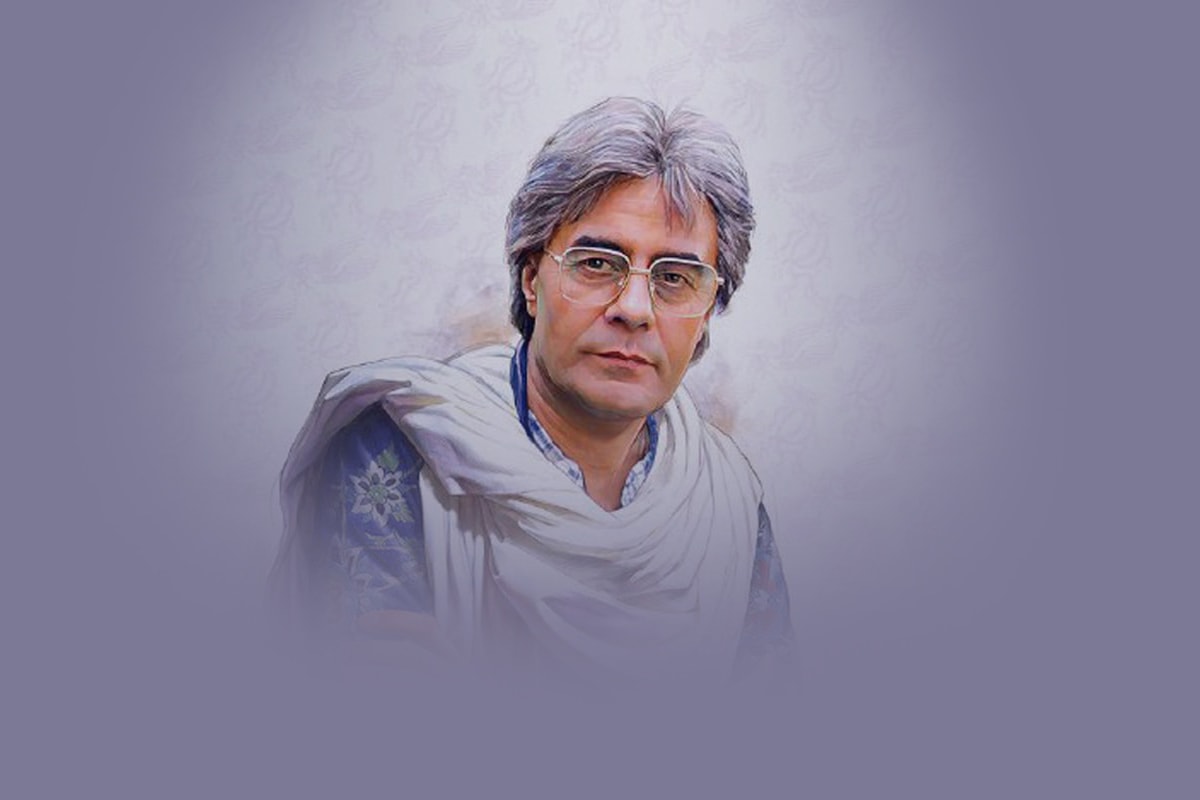Be Golden as gold mine & Green as leaf
carpe diemBe Golden as gold mine & Green as leaf
carpe diemKhosrow Shakibai
Khosrow Shakibai

Khosrow Shakibā'í or Khosro Shakibaei (Persian: خسرو شکیبایی; March 27, 1944, Tehran, Iran – July 18, 2008, Tehran) was an Iranian stage and cinema actor. He ranks amongst the most accomplished actors of his generation. Khosrow Shakibai was born to Colonel Ahmad Shakibāi and Ms Farideh Khātami. His father, who was an army Colonel, died from cancer when Khosrow (called Mahmoud by family and close friends) was only fourteen. Khosrow studied acting at Faculty of Fine Arts of University of Tehran. He began his stage career in 1963 and branched out his activities into film dubbing in 1968. Shakibā'í initiated his film acting in 1982 with Khatt-e Ghermez (The Red Line), directed by Masoud Kimiai. He had played in seven feature films when the film director Dariush Mehrjui offered him the title role of Hamoun, a film that over time has achieved a cult status.

Shakibai's performance in Hamoun marked a turning point in his career. He received a Crystal Simorgh at Fajr International Film Festival for his portrayal of Hamoun, a literary intellectual who gradually loses his touch with reality and becomes entrapped into an obsessive and destructive conflict with his estranged wife whom he deeply loves. Shakibai played also in some major television series. He won a Crystal Phoenix for Kimiā (The Philosopher's Stone) (1994) directed by Ahmad Reza Darvish.
Shakibai found also a considerable following for his voice, brought about through publication of the recordings of his readings of poems by such luminaries of the modern Persian poetry as Forough Farrokhzad and Sohrab Sepehri[1]. Shakibai is credited for helping to raise the stature of performing arts in Iran by the end of the 1980s, when the authorities in charge tended to neglect this area of cultural activities. He married twice. From his first marriage with the actress Tānyā Joharí he has one daughter named Poupak, and from his second marriage with Parvin Koush'yār one son named Pouria.

hosrow Shakibai died at 6 am on July 18, 2008, of liver cancer in Pārsiān Hospital in Tehran. Earlier it had been reported that Shakibai's death had been a consequence of his heart failure. It has further been reported that on October 5, 2007, Khosrow Shakibai had been admitted to a hospital for suffering from diabetes, however on his explicit request the press had withheld this information from public. On Sunday, July 20, 2008, the body of Khosrow Shakibai was laid to rest in The Artists Section of Behesht-e Zahra Cemetery in Tehran. His funeral procession began at 9 am from Vahdat Hall (Tālār-e Vahdat), Hafez Street, in Tehran.
the information is from wikipedia
Bela Lugosi
Bela Lugosi

Bela Lugosi, original name Blasko Béla Ferenc Dezső, (born October 20, 1882, Lugos, Hungary [now Lugoj, Romania]—died August 16, 1956, Los Angeles, California, U.S.), Hungarian-born motion-picture actor who was most famous for his sinister portrayal of the elegantly mannered vampire Count Dracula

At age 12 Lugosi ran away from home and began working odd jobs, including stage acting.
He studied at the Budapest Academy of Theatrical Arts and made his
stage debut in 1901. From 1913 to 1919 he was a member of the National
Theatre. While in Budapest he also acted in several Hungarian films, often under the name Arisztid Olt. In addition, he served in the Austro-Hungarian armed forces during World War I. He went to Germany in 1919 and acted in films there until he immigrated to the United States in 1921

Lugosi made his Hollywood film debut in The Silent Command (1923) but worked sporadically in film and theatre throughout the remainder of the decade, largely because he had not yet mastered the English language and had difficulty communicating with coworkers. In 1927 he managed to land the title role in the Broadway production of Bram Stoker’s novel Dracula. The production was a success, and Lugosi stayed with the show for the duration of its three-year run, including on tours. It was also during this time that Lugosi was the subject of a national scandal when his wife (his third of five) filed for divorce after only three days of marriage and named actress Clara Bow as corespondent

Lugosi became a national celebrity when he reprised his stage success for the Universal Pictures film adaptation Dracula (1931). With his slow, thickly accented voice, he etched lines such as “I never drink…wine” into the national consciousness, and Lugosi’s name was thereafter associated with that of the bloodsucking count. The success of Universal’s Frankenstein in the same year established the studio as the top producer of horror films and Lugosi and Boris Karloff (who starred in the role of Frankenstein’s Monster, a role Lugosi had turned down) as kings of the genre. Lugosi’s subsequent shockers included Murders in the Rue Morgue (1932), an adaptation of Edgar Allan Poe’s short story; White Zombie (1932); Island of Lost Souls (1932); and Mark of the Vampire (1935). He costarred with Karloff in several films, including The Black Cat (1934), The Raven (1935), and The Invisible Ray (1936), and he appeared occasionally in non-horror films, such as the Paramount Pictures all-star comedy International House (1933) and Ernst Lubitsch’s Ninotchka (1939).

Although Lugosi is most associated with the role of Dracula, many regard his portrayal of the half-crazed, broken-necked Ygor in Son of Frankenstein (1939) to be his finest screen performance. He again played Ygor in The Ghost of Frankenstein (1942), but by that time Lugosi’s star had faded. Thereafter he appeared in numerous low-budget, forgettable films. There were a few exceptions, such as his appearance as Frankenstein’s Monster—the role he had turned down in 1931—in Frankenstein Meets the Wolfman (1943). He teamed with Karloff again in the eerie The Body Snatcher (1945), and he returned to the role of Dracula in Abbott and Costello Meet Frankenstein (1948).
ugosi’s decline into poverty and obscurity was accompanied by a growing dependence on narcotics. In 1955 he voluntarily committed himself to the state hospital in Norwalk, California, as a drug addict; he was released later that year. About the same time, Lugosi began an association with Ed Wood, Jr., the man regarded by many as the most comprehensively inept director in film history. Their collaboration produced such staggeringly shoddy efforts as Glen or Glenda? (1953), Bride of the Monster (1956), and Plan 9 from Outer Space (filmed 1956, released 1959), all now unintentionally hilarious cult favourites. Lugosi was buried, as he wished, wearing the long black cape that he had worn in Dracula.

information is from :www.britannica.com

